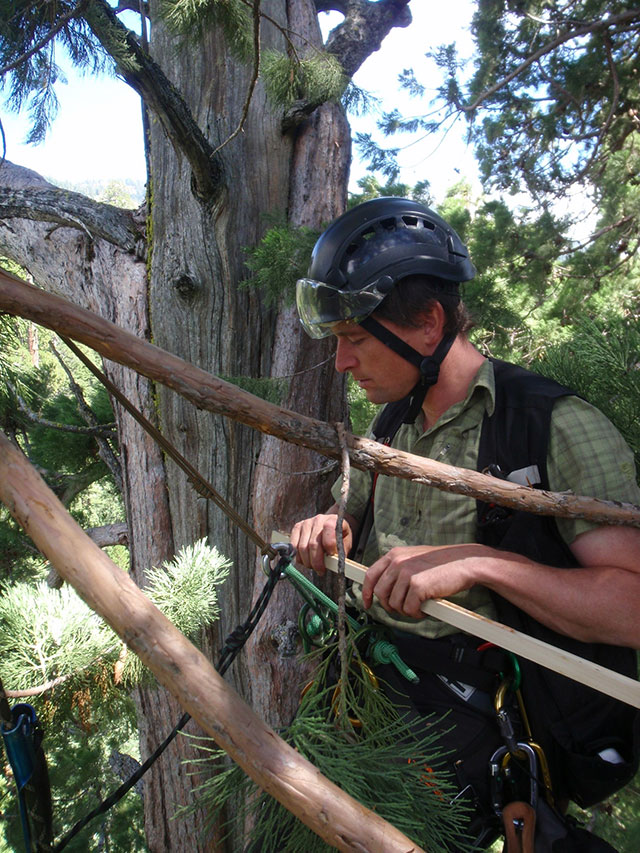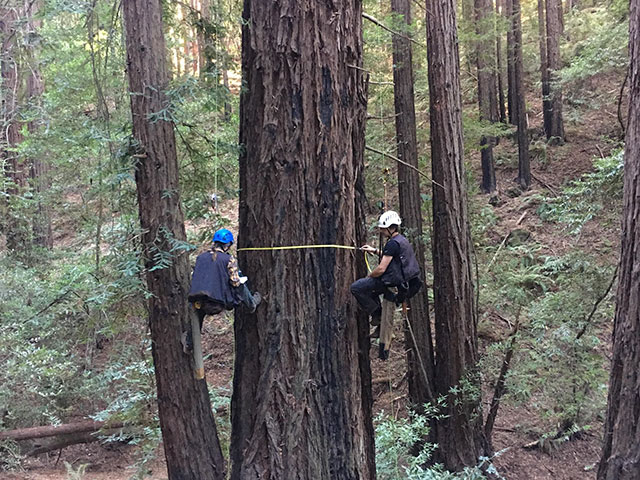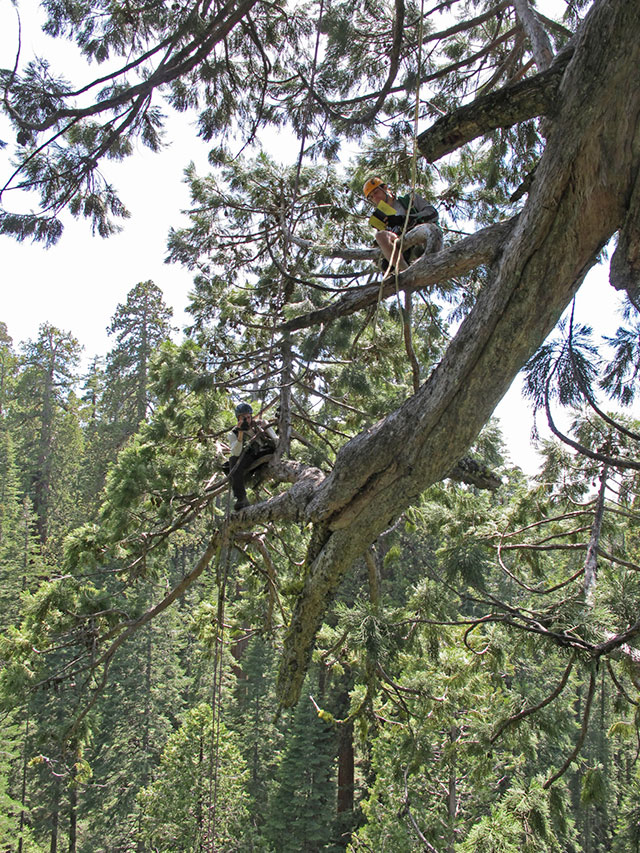
Newly published research from Save the Redwoods League and Humboldt State University (HSU) confirms the exceptionally large role that redwood forests can play in California’s strategy to address climate change. The research demonstrates that old-growth coast redwood forests store more carbon per acre than any other forest type. Forests of giant sequoia, coast redwoods’ closest relative, come in second. The findings cap 11 years of research through the League’s Redwoods and Climate Change Initiative (RCCI), which has also revealed that younger second-growth coast redwood forests grow quickly enough to result in substantial carbon storage in a relatively short period. This makes a strong case for investing in the restoration of previously logged redwood forests.
Seeking to understand how redwoods are responding to rising temperatures, hotter droughts, and other factors associated with climate change, Save the Redwoods League launched its ambitious research partnership with Humboldt State University in 2009. In the latest phase of the initiative, the team of scientists studied redwood forests throughout their geographic ranges and the growth rates of previously logged forests. These studies help establish management goals for redwoods in terms of tree height, biomass, carbon storage, wood production, and biological diversity. This work helps to identify where coast redwood trees have the highest potential to recover their stature quickly in harvested forests; where environmental and climatic conditions limit growth; and where improved forest stewardship is essential to increase coast redwood and giant sequoia forests’ resilience to climate change.
To arrive at their most recent findings, published in the latest edition of Forest Ecology and Management, the RCCI team combined intensive measurements and tree ring sampling to develop formulas for accurately quantifying forest biomass and productivity. In this study, the team climbed and measured 114 redwood trees ranging from 59 feet to 380 feet tall and from 115 to 2,340 years old.
“While the recent results improve our understanding of the carbon storage capacity of the state’s treasured old-growth forests, they also reveal that individual redwood trees can maintain high rates of productivity for well over 1,000 years,” said HSU Professor Steve Sillett, lead author of the studies and an expert on redwood forests. “Just as exciting is the fact that young redwood forests can accumulate biomass at rates even faster than old-growth stands—with trees surpassing 200 feet tall in less than a century. Our research shows that investing in redwoods’ restoration—in particular helping to set second-growth forests on the trajectory to old-growth characteristics—would have tangible carbon benefits.”

California’s Climate Strategy and the Opportunities in Redwoods Restoration
These RCCI results are provided as policymakers in California and all over the world are exploring the potential of natural solutions to the climate change crisis, particularly the role forests play in storing carbon in their wood as they grow. California’s current strategy for meeting its ambitious goals for reducing global greenhouse gases identifies an important role for natural and working lands. In 2019, the United Nations Intergovernmental Panel on Climate Change also issued a special report on the outsized role that forest conservation and restoration can play in addressing climate change.
“We have long recognized how iconic the redwood forests are to California’s identity,” said Save the Redwoods League President and CEO Sam Hodder. “Now we know that these redwoods are also our allies in the fight against climate change. That gives us all the more reason to accelerate the pace and scale of our efforts to protect and restore young, recovering forests and set them on course to become the old-growth forests of the future.”
Prior to industrial logging, California had more than 2 million acres of ancient redwoods, but now only about 113,000 acres of old-growth redwood forests remain, largely protected in parks and preserves. According to Sillett’s team, there can be up to 890 metric tons of carbon (1 metric ton = 2,205 pounds) stored per acre of old-growth redwood forest, which is the estimated equivalent of taking about 700 passenger vehicles off the road for a year.
In place of all that lost old-growth forest now stand about 1.5 million acres of younger second-growth redwood forests. Most of these forests (1.1 million acres) are commercially managed, with the remainder in various degrees of conservation ownership. While these regrowing forests don’t match old-growth forests in terms of total biomass or carbon storage per acre, they grow extremely quickly and recover fire- and decay-resistant carbon storage capacity fast.

In a study published last year, the RCCI team found that in 150 years, fast-growing second-growth redwood forests can accumulate 40 percent as much biomass and store 30 percent as much carbon as the original old-growth in their decay-resistant heartwood. Further, some redwood forests that were logged in the mid-1800s have already accumulated as much as 339 metric tons of carbon per acre—the equivalent of taking about 270 passenger vehicles off the road for one year. This level of carbon storage has profound implications when extended across 1.5 million acres of second-growth redwood forests.
These results suggest that investments in actively restoring second-growth redwood forests will result in substantial carbon sequestration without having to wait several centuries for the benefits of old-growth forests. These numbers have important implications when considering the potential carbon storage capacity across hundreds of thousands—or even millions—of acres of protected old-growth and regenerating redwood forests.
“It is critical to protect what remains of our ancient redwoods, restore the young recovering forests and make smart investments now in our nature-based solutions to climate change,” Hodder said. “In so doing, we will enhance the forests and parks that inspire and attract millions of visitors from around the globe. And we will demonstrate California’s leadership in building a more climate-resilient world.”
There is still a lot more to learn about how climate change will affect redwoods in the long run. Research from the RCCI partnership thus far indicates that the trees themselves were largely resilient to the recent drought. In fact, individual coast redwoods and giant sequoia in most old-growth forests studied to date have actually experienced a growth surge since the mid-1900s. At the same time, emerging research has shown that climate change-related shifts in fire severity, drought and forest pests have begun to impact giant sequoia, indicating a need for continued study of these forests in coming decades.
Save the Redwoods League
One of the nation’s oldest conservation organizations, Save the Redwoods League has been protecting and restoring redwood forests since 1918, connecting generations of visitors with the beauty and serenity of the redwood forest. Our 29,000 supporters have enabled the League to protect more than 216,000 acres of irreplaceable forests in 66 state, national and local parks and reserves. For more information, go to SaveTheRedwoods.org.